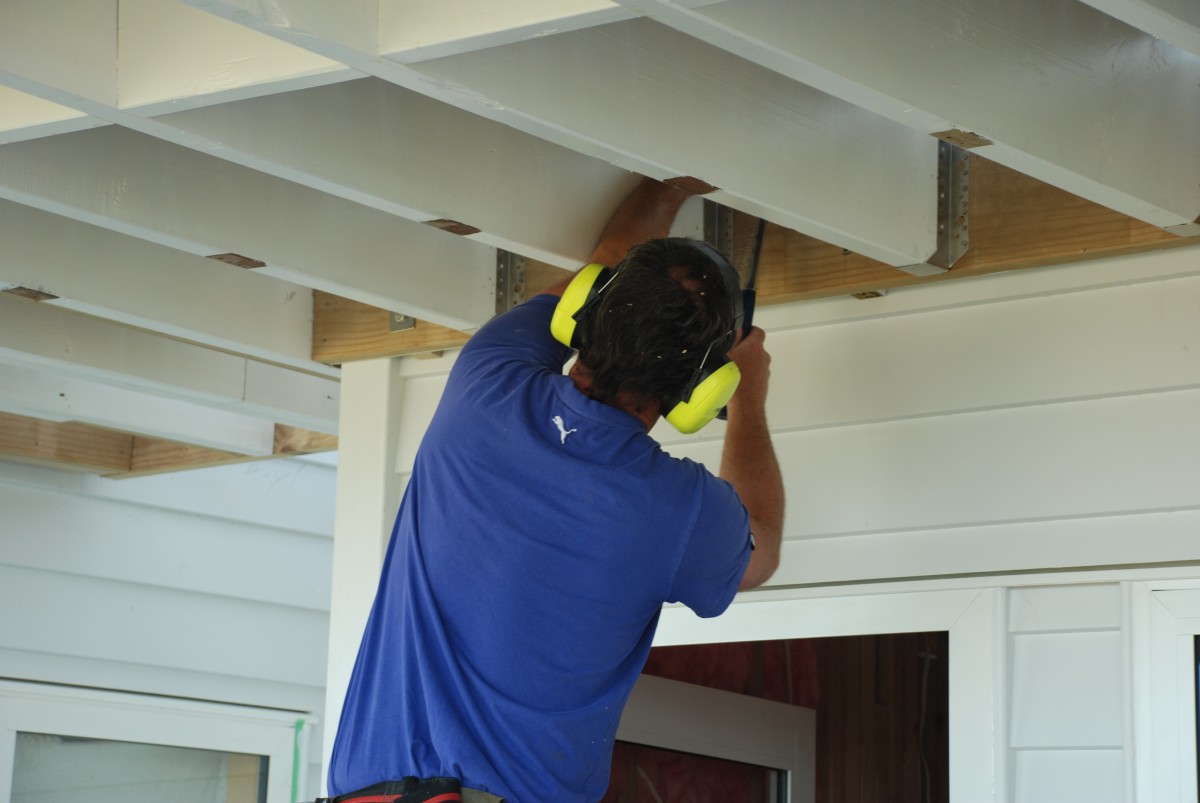Working safely with asbestos

Worksafe has released a new guide to help manage risks and protect yourself and others from asbestos fibres
Asbestos is a dangerous substance that can lead to fatal diseases, and builders are among the highest at risk. This is because they often work with products that may contain asbestos, such as fibreboard, lino and vinyl flooring, and laminated bench tops in kitchens.
Note: The guide offers advice for builders who work by themselves or have other people working for them. This only provides tips on how to avoid irritating asbestos or working around asbestos. It is important to note that licensed professionals should be the only ones to remove or manage asbestos, as this process must be executed correctly to avoid hazards.
If asbestos is suspected
If you uncover or damage asbestos containing materials (ACM):
- Stop work immediately
- Keep people away
- Minimise the risk of contamination/spreading
- Get advice from asbestos experts
In the event that asbestos needs to be removed:
- A licensed asbestos remover must remove all friable asbestos (in powder form).
- For non-friable asbestos (not able to be crumbled) over 10m2, a licensed asbestos remover must be contacted to deal with the removal
The risk of asbestos
Breathing in airborne asbestos poses a serious risk to people’s health, causing lung cancer, asbestosis, mesothelioma or other lung diseases.
Symptoms for diseases like those mentioned above can take between 10 to 40 years before they start to appear. This emphasises the need for safe work practices to protect workers from exposure to asbestos fibres.
Where is asbestos located?
Any building built before January 2000 is likely to contain some form of asbestos. Even some recently constructed buildings may have asbestos or asbestos containing materials (ACM).
It is important to note that asbestos and ACMs are not dangerous if they are in good condition and remain undisturbed to avoid any airborne fibres from being released.
Before you work
Commercial or industrial site:
When you begin the planning process and arrive at site, ask if there is an Asbestos Management Plan. If asbestos or ACM is found or is expected to be discovered, the PCBU along with management must prepare an Asbestos Management Plan.
This management plan must tell you the location and conditions of any asbestos on site, or where it is expected to be. It must also point out how the identified asbestos should be managed on site.
At a residential site:
Ask the homeowner if they are aware of any asbestos in and around the house. If no one is certain, carry out checks so control measures can be put in place if any is encountered.
How to work safely with asbestos
Training:
The best way to learn how to identify and safely work around asbestos is to attend asbestos awareness training. Courses are available across New Zealand and usually take a couple of hours.
Protection:
It is imperative builders take measures to protect themselves when working near asbestos, no matter how small the job is. If possible, plan the job so that no asbestos is disturbed, and don’t start work until having the right information and training to work safely.
Reduce dust:
Keeping ACM damp (but not too wet) prevents dust fibres from circulating.
Before starting a job, you can wet ACM by using a low-pressure water spray such as a hand-held squirt bottle. Maintain the appropriate level of wetness while working to reduce the chances of asbestos becoming airborne.
Do not use a high-pressured hose to wet ACM, as this will irritate the asbestos and increase the risk of breathing it in.
Use dust collection equipment wherever possible, and use plastic sheets to cover your work area.
Restrict power tool use:
There are regulations that restrict the use of power tools for asbestos work. Power tools and other equipment may only be used around asbestos if they are used in an enclosed area or designed to capture/suppress asbestos.
Wear the right equipment:
Respiratory protective equipment protects builders from breathing in hazardous substances.
A disposable ‘P2’ mask is the minimum amount of protection required. It’s important to make sure your mask fits correctly and that facial hair isn’t creating any gaps that asbestos may breach.
Disposable coveralls also stop asbestos from getting on your clothes. Wearing a pair that is slightly too big helps prevent any rips at the seams.
Footwear should completely cover each foot.
Getting rid of asbestos waste
All asbestos waste must be disposed at an authorised disposal site. Local councils can help find a dump that accepts asbestos waste.
All waste, including disposable protective gear, should be double-bagged in heavy-duty plastic bags and sealed so that contents are fully enclosed. The bags should be clearly marked that they contain asbestos waste.
For more detailed tips and methods about working with asbestos, visit worksafe.govt.nz/topic-and-industry/asbestos
Register to earn LBP Points Sign in
2 Comments
Leave a Reply
You must be logged in to post a comment.




WHERE IS THE QUIZ
Hi there,
There was no quiz for this one, but we hope you still found it educational.
Cheers,
The Under Construction team